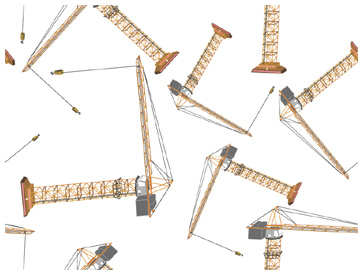 The following article originally appeared in the February 2017 newsletter to clients of Kiley Advisors, now a part of FMI Corporation. Reprinted with permission.
The following article originally appeared in the February 2017 newsletter to clients of Kiley Advisors, now a part of FMI Corporation. Reprinted with permission.
Milestone events, like our acquisition by FMI, prompt a period of reflection and optimism. You look to the past for conclusions and lessons; you look to the future with expectations and possibilities. While I was in this period of pondering, I heard Tim Cook, Apple’s highly respected CEO, on the Charlie Rose Show. Responding to the question about Apple’s continuing ability to innovate, he said, “We will always do it. Steve [Jobs] put innovation in our corporate DNA.”
That interchange made me think harder and deeper as I looked to the past. For the past 33 years, from a very privileged perch, I have been observing commercial construction contractors in the Greater Houston Area. This period per statistics and records has been the most volatile in history. Adapting to frequent, often extreme, changes has been imperative for those companies that survived and prospered. So, what are the lessons learned? These companies have all had two distinguishing qualities that have been passed to at least two generations, and in some cases, three. They have had strong, values-anchored, self-aware leaders; and they have had a culture of lifelong learning in every role in the organization. These elements are in their corporate DNA.
The character strength of these leaders made them predictable and trustworthy, a stabilizing force for dealing with the changing reality. Conditions may be changing, but the leaders, as individuals, were not. Their values provided a reinforcing foundation that allowed them to define the new context, articulate the new vision, and drive the necessary changes with a fully engaged team of managers and employees.
The lifelong learning commitments built a culture of continuous improvement and best practices in every area. Their constant training gave the entire team a sense of preparedness and urgent confidence. They could move quickly to adapt and change; they knew what to do and how to do it.
As I look forward, I see the rate of change accelerating, and the potential for a truly disruptive approach to the traditional building process. Prefabrication is expanding; the manufacturing model with heavy use of robotics is growing daily. People currently seek funding to expand the use of 3D printing, on and off the job site. More complex data generating project management technologies are being demanded by owners. Acquiring the ability to lead and learn much more quickly than in the past will be the separating attributes in the DNA of those companies that survive and prosper going forward.
Focusing continuously on these two critical areas will allow companies to build a magnetic culture, one that will attract the talent that will adapt to the evermore volatile changes ahead. They will have a distinct competitive advantage.
Leadership and Lifelong Learning – Lessons from the Past; Keys to the Future
by Pat Kiley | February 14, 2017


